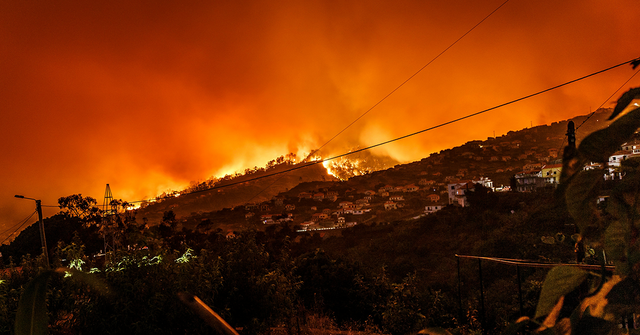
BeZero reveals record fire risks to carbon projects in State of Wildfires report
Led by BeZero’s Director of Remote Sensing, Dr. Niels Andela, and Senior Remote Sensing Scientist, Dr. Dave van Wees, our analysis finds record-high fire activity has affected carbon projects worldwide with 18% of forestry projects experiencing fire in 2024, the highest level since monitoring of these forests began in 2001.
Integrating natural hazard detection, fire analysis and physical climate risk into carbon project analysis can help support effective mitigation strategies and accurate accounting of these risks - increasingly essential as climate extremes intensify.
Mapping wildfire risk across the voluntary carbon market
BeZero’s contribution to the State of Wildfires report combined our proprietary global dataset of nearly 1,000 forestry project boundaries with NASA’s two-and-a-half-decade record of satellite data on burned areas. This integration allowed for the market’s first annual assessment of wildfire exposure across the voluntary carbon market (VCM), benchmarking 2024 against historical forestry data from 2001 to 2023.
Key findings
The results show a clear escalation in fire exposure across carbon projects globally. In 2024, 18% of forest carbon projects were affected by fire - the highest proportion since records of these forests began in 2001.
On average, 1.6% of total project area burned, and nearly three quarters of projects (72%) experienced above-average drought conditions, with 13% facing extreme drought.
Together, these findings highlight how prolonged heat and dryness have combined with land-use pressures to heighten the vulnerability of forest carbon projects to wildfire.
Regional differences
Patterns varied greatly across regions. For instance, the record number of affected projects in Latin America was largely driven by severe drought and changing land use that have intensified fire activity across the Amazon, Pantanal and surrounding dry forests.
In North America, a smaller number of projects were impacted overall, but those that were affected saw record average burned area - reflecting how hotter, drier conditions are increasing fire severity.
Whilst Africa retains the highest burn exposure, 2024 was a relatively low-fire year, consistent with long-term declines in savanna and woodland fires from land cover conversion.
Despite these regional differences, almost half of all projects (46%) experienced no fire at all since 2001 - demonstrating that many face low risk where strong management practices and ecological conditions help mitigate extreme weather.
“Rising climate risks resulted in record project exposure in 2024, but the majority of forest carbon projects remain at moderate to low risk from fire. Project-level risk evaluations can support effective mitigation strategies and accurate accounting of these risks over the project lifetime,” said Dr. Niels Andela, Director of Remote Sensing.
Why this matters
The 2024-25 State of Wildfires report illustrates how elevated global fire risk due to climate change and land use directly impacts carbon projects and the permanence of their credits. This growing risk from fire is a critical challenge for nature-based projects to contend with in how they store carbon over time, but well informed mitigation strategies can help manage these risks.
The BeZero Carbon Rating framework incorporates evolving risks such as these in order to assess the quality of carbon credits. As global carbon markets continue to scale, it becomes ever more important to maintain an up to date understanding of project-level risk.
You can find the full State of Wildfires 2024 - 2025 report here, as well as a summary for policymakers here.